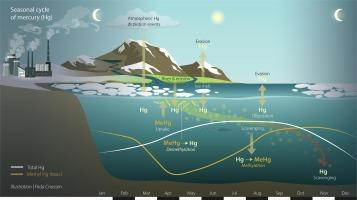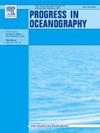Biotic transformation of methylmercury at the onset of the Arctic spring bloom
Abstract
Despite the lack of local anthropogenic mercury sources, methylated mercury (MeHg) concentrations in Arctic biota are higher than in biota from lower latitudes. The main entry route occurs during the bioconcentration of seawater monomethylmercury (MMHg) into phytoplankton. Despite the known seasonal changes in biological activity in the region, little is known about the seasonal cycling of total mercury (THg) and MeHg in the Arctic Ocean. Here, we report the concentrations of THg and MeHg in seawater sampled from the northwestern Barents Sea water column during late winter and spring. In the upper 500 m, the THg concentrations are significantly higher in spring (0.64 ± 0.09 pmol L-1) compared to late winter (0.53 ± 0.07 pmol L-1), driven by seasonal inputs to surface waters from atmospheric deposition and the dynamics of changing sea ice conditions. Contrastingly, the MeHg concentrations in spring were significantly lower (41 ± 39 fmol L-1) compared to late winter (85 ± 42 fmol L-1). We suggest that most MeHg is biotically demethylated by both phytoplankton and bacteria, with additional losses from photodemethylation and evasion. Our observations highlight the importance of demethylation during potential uptake of methylmercury coinciding with the Arctic spring bloom. Lastly, we use our new data together with previously published seasonal data in the region to construct a simplified seasonal mercury cycle in an Arctic marginal ice zone.


 求助内容:
求助内容: 应助结果提醒方式:
应助结果提醒方式:


